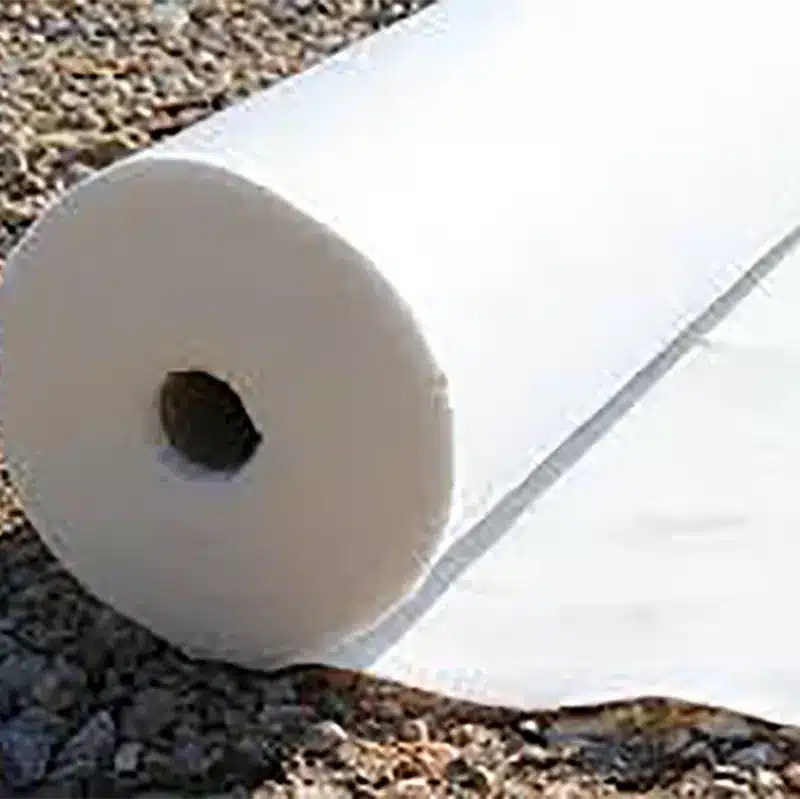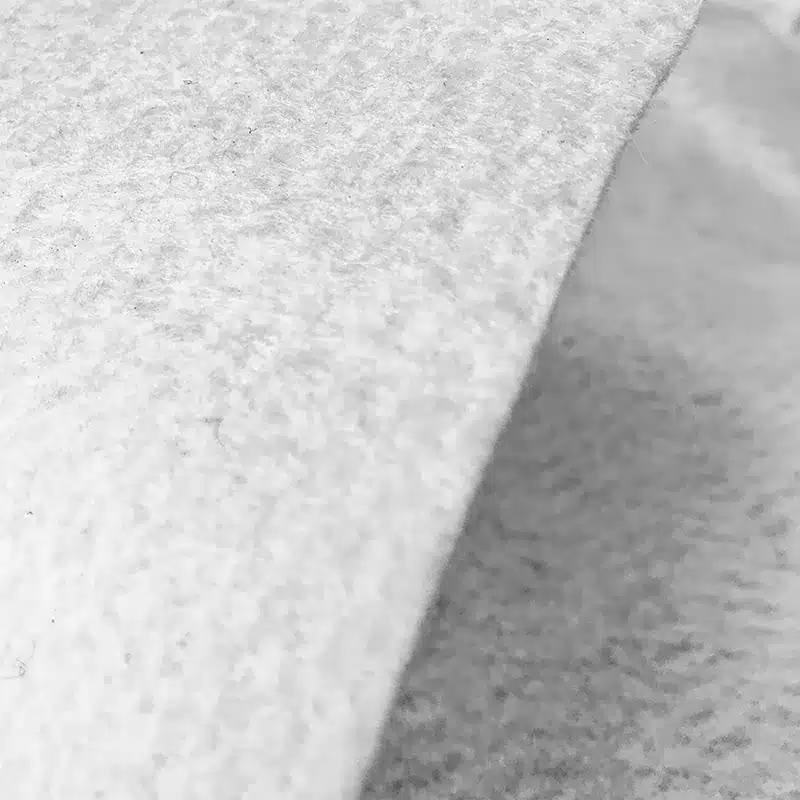+86-159 9860 6917
info@geofantex.com
geofantex@gmail.com
+86-400-8266163-44899
Retaining walls play a crucial role in managing soil erosion and supporting landscapes. Behind every well-built retaining wall lies a key component: the fabric. This article explores the importance of retaining wall fabric, its types, and common questions surrounding its use.
What kind of fabric should I use behind a retaining wall?
When constructing a retaining wall, the fabric behind it plays a crucial role in maintaining its structural integrity. This fabric, often referred to as a geotextile, serves several purposes, including aiding in proper drainage, reducing pressure on the wall by keeping soil in place and preventing erosion.
Importance of Fabric Behind a Retaining Wall
The purpose of using fabric behind a retaining wall is to improve its longevity and stability. Retaining walls are built to hold back soil, and without proper drainage, water can accumulate behind the wall, leading to pressure that may cause the wall to collapse. Geotextile fabrics help with drainage by allowing water to pass through while retaining the soil. This keeps the soil compacted and prevents erosion, making the wall more resilient to weather changes and heavy rainfall.
Suitable Types of Fabric for Retaining Walls
Here are the most commonly used fabrics behind retaining walls:
- Non-Woven Geotextile Fabric: This is the most popular choice for retaining walls because it excels at filtration and drainage. Made from polypropylene or polyester fibers, it is permeable, allowing water to pass through while keeping the soil intact. It’s ideal for preventing soil erosion and maintaining soil stability. However, it’s not very strong when it comes to load-bearing, so it’s best used in conjunction with other reinforcements.
- Woven Geotextile Fabric: This type of fabric is much stronger than non-woven geotextiles and is used when additional strength is required. It is commonly used in situations where the retaining wall may experience heavy loads. Woven geotextile fabrics are made from plastic strips or threads and are more effective at soil reinforcement, but they are less permeable, so they are not as effective at drainage.
- Filter Fabric: This is a more specialized form of geotextile used specifically for drainage purposes. It prevents fine soil particles from clogging drainage systems while still allowing water to flow freely. Filter fabrics can be a good option for areas prone to heavy rain where drainage is critical.
Installation Tips for Fabric Behind Retaining Walls
- Prepare the Area: Before installing the fabric, clear any debris from the area behind the retaining wall. Ensure that the base is solid and level.
- Lay the Fabric: Place the geotextile fabric along the back of the retaining wall, extending it from the base to the top of the wall. The fabric should be secured tightly against the wall and should extend slightly below the wall’s footing to ensure full coverage.
- Overlap for Stability: When multiple sheets are needed, ensure that the fabric overlaps by at least 12 inches. This prevents any gaps that may allow soil to erode through.
- Backfill Carefully: Once the fabric is in place, carefully backfill the area with gravel or coarse material. This will help promote drainage while keeping the fabric intact.
- Regular Maintenance: Check for any signs of damage or wear over time, particularly after heavy rain. Replace or repair any torn fabric to ensure continued protection.
Selecting the right fabric behind a retaining wall is crucial for its durability and functionality. Non-woven geotextiles are ideal for most retaining wall applications due to their drainage capabilities, while woven geotextiles are better suited for walls under heavy loads. Proper installation, such as securing the fabric tightly and backfilling with drainage-friendly materials, will enhance the wall’s stability and lifespan.

Do you need geotextile for a retaining wall?
Geotextile is highly recommended for retaining wall construction due to its crucial role in soil stabilization, drainage, and erosion control. Here’s a breakdown of how geotextile benefits retaining wall projects:
Soil Stabilization: Geotextile helps to separate different soil layers, preventing the intermixing of fine particles with coarse aggregates. This enhances the stability of the wall by improving the load-bearing capacity of the base.
Drainage: It allows water to pass through while preventing soil particles from migrating, reducing hydrostatic pressure behind the wall. Proper drainage is essential to prevent water buildup, which can compromise the structural integrity of the retaining wall.
Erosion Control: By controlling the movement of soil particles, geotextile reduces erosion, particularly during rain or in areas prone to water runoff. This helps to maintain the long-term stability of the structure.
Advantages of Geotextile:
- Increased Wall Stability: By controlling soil movement and water flow, geotextile improves the overall strength of the retaining wall.
- Cost-Effective: It can be a cost-effective solution to prolong the life of the retaining wall by preventing structural failures due to poor drainage or soil erosion.
- Easy Installation: Geotextiles are relatively simple to install and can be tailored to fit various designs and needs.
Disadvantages:
- Clogging: Over time, geotextiles may become clogged with fine particles, reducing their effectiveness for drainage if not properly maintained.
- Durability: Depending on the material quality, some geotextiles may degrade over time due to exposure to UV light or chemical reactions in the soil.
Alternatives to Geotextile:
- Gravel Backfill: A properly designed gravel drainage system can sometimes be used instead of geotextile for drainage purposes, but it may not offer the same level of soil separation and erosion control.
- Concrete Blocks with Built-in Drainage: Some retaining wall systems use concrete blocks with internal drainage channels, eliminating the need for geotextile in certain designs.
In conclusion, using geotextile is generally a good practice for retaining wall construction due to its benefits in stabilizing soil, improving drainage, and preventing erosion. However, alternatives such as gravel backfill or advanced concrete block systems can be considered depending on specific project needs and site conditions.
What’s the difference between landscape fabric and geotextile fabric?
Landscape Fabric
- Material: Usually made from woven or non-woven polypropylene or polyester.
- Intended Uses: Primarily used in gardening and landscaping to suppress weed growth.
- Permeability: Allows air, water, and nutrients to pass through, promoting plant health while reducing weed growth.
- Durability: Moderate lifespan, generally designed for lighter, non-structural use such as in flower beds or under mulch. May degrade with prolonged sun exposure.
- Advantages: Easy to install, helps reduce the need for herbicides, improves soil health by preventing erosion and conserving moisture.
- Disadvantages: Limited durability, especially in heavy traffic areas or harsh climates. It may tear or break down over time.
- Example Use: Ideal for use under mulch in garden beds, around trees, or in flower gardens to prevent weeds while allowing plants to thrive.
Geotextile Fabric
- Material: Manufactured from synthetic polymers like polyester or polypropylene, but typically heavier-duty than landscape fabric. Comes in woven or non-woven varieties.
- Intended Uses: Primarily used in construction and civil engineering projects for erosion control, drainage, and soil stabilization.
- Permeability: The woven variety is less permeable, designed to separate soil layers or control erosion. Non-woven geotextiles are highly permeable, allowing water to pass through while filtering out debris.
- Durability: Much more durable than landscape fabric, capable of withstanding heavy loads, traffic, and harsh environmental conditions.
- Advantages: Superior strength, long-lasting, ideal for stabilizing soil, and managing drainage. Resistant to punctures and UV degradation.
- Disadvantages: More expensive than landscape fabric, overkill for light gardening tasks.
- Example Use: Often used in road construction, retaining walls, drainage systems, or beneath driveways to prevent soil erosion and provide stability.
Key Differences
- Application: Landscape fabric is more suitable for gardening and light landscaping, whereas geotextile fabric is used for heavier construction and civil engineering projects.
- Durability: Geotextile fabric is more durable and designed for long-term use in high-stress environments.
- Permeability: Geotextile fabrics come in both permeable and non-permeable options, while landscape fabric is generally permeable for gardening purposes.
- Cost: Landscape fabric is typically more affordable, whereas geotextile fabric is more expensive due to its heavy-duty nature.
Does water penetrate geotextile fabric?
Geotextile fabrics are permeable, meaning they allow water to pass through while retaining soil particles. This permeability is crucial behind retaining walls as it prevents water buildup, which can exert pressure on the wall and lead to instability. Geotextiles can be used in filtration to allow water to go through the covered layer, maintaining the wall’s effectiveness and durability by facilitating drainage and reducing hydrostatic pressure.
Choosing the right fabric behind your retaining wall is pivotal for its performance and longevity. Geotextile fabrics, known for their durability and drainage capabilities, play a critical role in stabilizing soil, managing water flow, and preventing erosion. Understanding these fabrics ensures your retaining wall stands strong against the test of time and environmental pressures.
This article provides insights into the importance of retaining wall fabrics, clarifying common questions and emphasizing the benefits of using geotextiles for optimal performance.



Get Free Sample
We’ll respond as soon as possible(within 12 hours)






















